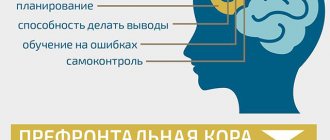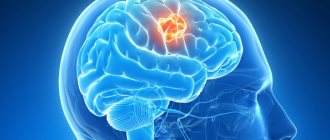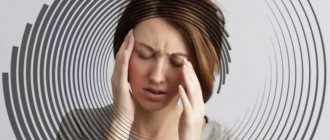Useful articles
Stress is a nonspecific response of the human body to the influence of external extreme factors. When a person experiences psychological stress, his level of production and release of adrenaline into the blood increases. Representatives of the fair sex are more susceptible to stress than men. Overexertion quickly exhausts a woman; as a result, a depressive state develops and a feeling of anxiety appears (often even unmotivated). Timely and adequate treatment of stress in women can prevent complications in the form of exacerbation of somatic diseases and the development of mental disorders.
Please note: Stress in reasonable amounts is even necessary, but frequent psycho-emotional stress leads to disruption of the nervous system due to its exhaustion.
What is stress and where does it come from?
We are accustomed to perceiving stress as something negative, but in fact it is simply a reaction of the body, a response to overstrain, strong emotions, both positive and with a negative connotation. In this condition, the hormone adrenaline is actively produced, forcing a person to think about the situation and look for a way out of it. Causes of stress can be :
- conflicts with colleagues, relatives, friends;
- dissatisfaction with yourself, your achievements or appearance;
- constant lack of money, debts;
- routine lifestyle without vacation, proper rest;
- illness or death of a loved one;
- job loss;
- loneliness.
Recently, stressful conditions have often developed against the backdrop of the coronavirus pandemic. This is caused by a constant fear of getting sick, a strong concern for loved ones, and the inability to maintain the usual way of life.
Causes
There are external and internal reasons that can provoke emotional burnout. The first category of unfavorable factors can be corrected quite simply. Internal factors are attitudes, behavior patterns, character traits and beliefs that guide a person when making life-changing decisions. External conditions can provoke emotional burnout when a person already has internal prerequisites for this. External unfavorable environmental factors include:
- Harsh working conditions – heavy workload, tight schedule
- Unsatisfactory salary
- Lack of ability to concentrate on job responsibilities - excess distractions
- Dissatisfaction with the choice of profession, inability to change occupation to a more attractive one
- Unfavorable atmosphere - tense relationships with colleagues or management, excessive pressure.
Among the internal reasons for the development of emotional burnout are hyper-responsibility, social stereotypes, dependence on other people’s influence, opinions, devaluation of one’s own desires and needs, fear of being unnecessary, unclaimed, and useless.
How does stress develop?
But when stress occurs too often or exceeds the body’s capabilities, it begins to weaken and lose strength.
It can even lead to serious illness. three phases in the development of stress :
- mobilization of the body's defenses and resources to combat the stress factor. At this stage, hormones are released that give a boost of energy;
- confrontation - searching for a way out of the situation. The body tries to return to normal functioning due to hormonal changes;
- exhaustion – with prolonged exposure to traumatic circumstances, the body loses the ability to resist, adapt and becomes vulnerable to all kinds of diseases.
The severity of each stage depends on the individual characteristics of the person, his state of health, type of temperament, character.
Why is it dangerous?
Emotional burnout negatively affects all areas of life of the person who experiences this phenomenon, as well as the people around him. In addition to the proven effect on a person’s somatic health, it is possible to classify the main dangers of emotional burnout for different categories of citizens, depending on their gender and age characteristics.
- Consequences of emotional burnout for men. It is known that representatives of the stronger half of humanity strive for full professional self-realization. Their ambitions often exceed their real capabilities, but the craving for self-affirmation, prestige, and recognition always turns out to be stronger than circumstances. Emotional burnout is exactly what will prevent you from achieving success even if you have all the necessary competencies. A man’s self-esteem will suffer so much from unfulfilled and unjustified hopes that he is unlikely to be able to overcome the fear of failure in the future.
- Consequences of emotional burnout in women. Burnout syndrome has a negative impact on your personal life. The desire to be alone and to replenish energy reserves is often perceived even by those closest to them as neglect. Subsequently, conflicts arise in the family, which can easily lead to separation - and this is an additional test for the already sensitive psyche of a woman.
- Consequences of emotional burnout in children. The syndrome is especially dangerous in childhood, when the child is just learning about the world around him, learning to express and cope with emotions, and interact with people around him. The stress experienced can seriously affect the child’s psyche and his view of reality. The development of full-fledged fears and even phobias, disruption of the process of personal identification and establishing contacts with peers cannot be ruled out.
- Consequences of emotional burnout for adolescents. During adolescence, boys and girls are especially susceptible to negativity. Having experienced the symptoms of emotional burnout, a teenager’s life can be forever changed - complicated by depressive, anxiety disorders, substance abuse, psychosomatic illnesses and even suicidal tendencies.
It is impossible to predict how burnout will affect a particular person, but the frightening range of possible consequences should serve as the main motivation for regular analysis of one’s own well-being.
Symptoms and signs of stress
There are a number of symptoms that
appear in most people who find themselves in a state of stress. Physiologically this manifests itself in:
- a sharp drop or, conversely, an increase in pressure;
- attacks of chills or fever;
- increased sweating;
- dizziness;
- digestive disorders;
- significant weight gain or loss;
- muscle hypertonicity and tremor (shaking).
Headaches, pain in the stomach and back often occur, and rashes similar to allergic ones may appear. Stress is accompanied by loss of sleep and appetite .
Types of Mood Swings
Globally, mood swings are usually divided into:
- cyclothymic – affective disorders associated with a sharp transition from high mood to apathy;
- depressive – chronic mood disorders associated with illness, medication, hormonal levels, etc.;
- biopolar - constant changes in mood, from a depressive state to inspiration on the verge of euphoria.
Cyclothymic disorders include two types of disorders - hypothymic and hyperthymic manifestations. In the first case, we are talking about situations of apathy, depression, uncertainty, and dissatisfaction. In the second - about cases of increased activity, severe excitability, little sleep, etc. The essence of cyclothymic disorders is the inevitable cyclical transition from one state to another.
Depressive states are temporary, caused by external causes associated with hormonal changes and injuries. Depression can develop while taking medications. The hallmarks of depressive mood swings are feelings of depression, emptiness, lack of self-confidence and reluctance to do anything. In other words, the patient loses his taste for life.
Bipolar disorders are conditions in which a person abruptly moves from a period of activity and creativity to a period of apathy and reluctance to do anything.
The types of mood disorders listed above are typical for both women and men. In this material we will pay attention to representatives of the fair sex.
MIGUNOVA ANASTASIA ANDREEVNA
Cosmetologist
Initial consultation: RUB 4,500
Make an appointment with a doctor Instagram
VYATKINA IRINA SERGEEVNA
Gynecologist-endocrinologist
Initial consultation: RUB 8,500
Make an appointment with a doctor Instagram
KALININA EKATERINA ALEXANDROVNA
Cosmetologist
Initial consultation: RUB 4,500
Make an appointment with a doctor Instagram
KOZLOVA EKATERINA NIKOLAEVNA
Gynecologist-endocrinologist, oncologist
Initial consultation: RUB 5,000
Make an appointment with a doctor Instagram
How does stress affect the body?
Severe or prolonged stress may well cause the development of diseases.
In this case, the most weakened systems of the body suffer, so the consequences vary from person to person. Against the background of a stressful state, the following may develop :
- bronchial asthma due to constant tension of the muscles involved in the respiratory system;
- hypertension, heart and vascular diseases due to constantly high blood pressure and rapid heartbeat;
- peptic ulcer;
- neurotic and depressive disorders;
- damage to the gastric mucosa due to increased production of gastric juice;
- diabetes – due to the liver releasing an additional portion of glucose and increasing its concentration in the blood;
- gynecological problems up to infertility.
It is impossible to predict exactly what problems stress will provoke. Moreover, they can appear individually or in groups, or all at once, in a complex.
Anxiety and depressive disorders in women
Yuri Aleksandrovich Vasyuk presented an overview report on the topic of anxiety and depressive disorders in women and the possibility of drug correction of depression.
00:00
Ivashkin Vladimir Trofimovich , academician of the Russian Academy of Medical Sciences, Doctor of Medical Sciences:
“I will now give the opportunity to make a message to Professor Yuri Aleksandrovich Vasyuk. "Anxiety and depressive disorders in women."
Yuri Aleksandrovich Vasyuk , Doctor of Medical Sciences, Professor:
— Good afternoon, dear colleagues.
Today we will talk about anxiety and depressive disorders in women and the possibilities of their medical correction.
First of all, we need to remember the definition of depression. As you know, depression is characterized by a state of low mood, depression, sadness, decreased or loss of interest in any activity, and decreased activity.
If current trends continue, by 2020 depressive disorders will take second place (after coronary heart disease) among all diseases in terms of the number of years lost due to disability.
Speaking about the epidemiology of depression, it would probably be very revealing to reflect the situation that has developed in such a rich and prosperous country as the United States.
It is known that 10 million people in this country currently suffer from clinically significant depression. Another 20 million suffer from adjustment disorders. The economic burden of depression in the United States is $83 billion.
Great Britain is also an equally prosperous country. The concept of “iceberg depression phenomenon” has even been introduced. Its essence lies in the fact that only a third of patients with depression turn to doctors. Only a third of those applying are diagnosed with an affective disorder. This part of the patients is prescribed adequate treatment.
The total cost of depression in the UK is more than 15 billion pounds. 65% of patients with depression are a consequence of insufficient diagnosis and untimely correction. 65% of patients with depression have suicidal ideation, 15% of them commit suicide.
Speaking about risk factors for depression, we can recall quite a lot of unfavorable circumstances. History of anxiety disorder, unfavorable heredity, lack of social support, postpartum period, drug or alcohol addiction, severe somatic illnesses, old age, low socioeconomic status. But the female gender occupies a special place in this list.
02:37
Risk factors for mental disorders in premenopausal women. In fact, there are quite a lot of disorders. But it is necessary to note the most significant of them. First of all, this:
- - stressful life events:
- - divorce;
- - childlessness;
- - loss of social security;
- - history of mental disorders;
- — low level of education;
- - postpartum period, premenopause, oophorectomy, luteal phase of the menstrual cycle.
We will try to discuss in detail all of the listed conditions.
The so-called “female depression”. This is premenstrual syndrome (PMS). It is characterized by depression in combination with somatic disorders (vegetative-vascular and neuro-endocrine).
Premenstrual dysphoric disorder is the same, but in combination with pathocharacterological manifestations (up to suicidal thoughts, affective lability).
If we talk about epidemiology, it should be noted that in the population the frequency of PMS is 30–70%, depending on age. In mentally ill women, the incidence of PMS is 100%.
Clinical criteria for this syndrome boil down to the following key points:
- — PMS occurs 2-14 days before menstruation and disappears with its onset or in the first days of menstruation;
- — it is a complex of vegetative-vascular, metabolic-endocrine and mental disorders;
- — in the premenstrual period, aggressiveness, suicidal activity, the frequency of offenses and suicide attempts increase.
04:28
Postpartum depression is also a fairly common situation.
Manifestation or repeated attack of endogenous depression. Typically, postpartum depression occurs 10–12 days after an uncomplicated birth without an external cause. The clinical picture is characterized by classic depressive symptoms, anxiety and an atypical form (tearful).
Neurotic depression is distinguished separately. It manifests itself before childbirth (stress, fear of childbirth) or after childbirth (psychogenies associated with family and child). The clinical picture of neurotic depression is manifested by asthenic-depressive and anxiety-depressive symptoms.
Another type of depression in women is associated with menopause. Her options:
- - menopausal depression;
- - psychogenic depression;
- - endogenous depression;
- - involutive depression;
- - depression during surgical menopause.
Emotional-affective syndrome is known to be characterized by:
- - decreased mood;
- - loss of interest in one’s own personality and in the environment;
- - unmotivated anxiety;
- - suspiciousness, anxiety;
- - feeling of internal tension;
- — alarming fears for one’s health, etc.
05:50
Asthenic syndrome is very well known to all of us. There is probably no need to dwell on it for a long time. It is enough to recall such key manifestations as increased fatigue, decreased activity, increased vulnerability, touchiness, excessive sensitivity, mood lability, tearfulness and irritability.
Somatovegetative disorders occur in almost every second or third woman at an outpatient appointment. These are palpitations, arrhythmia, discomfort in the left half of the chest, fluctuations in blood pressure (BP), a feeling of lack of air, dyspeptic disorders, chills, trembling, sweating.
Finally, dissomnia disorders (or sleep disorders). They manifest themselves in women by an increase in the time it takes to fall asleep, frequent awakenings at night, low subjective assessment of sleep quality and the so-called “sleep apnea” syndrome.
A fairly large part of depression in women is occupied by depressive disorders during surgical menopause. The frequency of these disorders (according to some authors) reaches 60–80% of cases. But most of the literature indicates the detection of this syndrome in 40–45% of patients.
The clinical picture is characterized by a combination of affective (anxious, melancholy, apathetic, dysphoric) and somatovegetative disorders (which we just talked about).
For the treatment of affective disorders of the depressive spectrum, combination therapy is optimal. It is possible to use small doses of antidepressants in the treatment of these conditions.
Diagnosis of depression with concomitant somatic pathology. This is a very important point. I would like to draw your attention to the main clinical manifestations. A targeted search for the most significant symptoms of depression:
- - yearning;
- - sleep disturbance;
- - guilt, low self-esteem;
- - suicidal ideas/thoughts about death;
- - frequency of manifestation of painful symptoms.
This makes it possible in most cases to suspect the presence of a depressive syndrome.
Assessing the dynamics of these symptoms (especially improvement while taking antidepressants) is a direct indication of its presence. In doubtful cases, treatment is carried out ex juvantibus.
08:26
It should be noted that, as a rule, depression is masked by somatic manifestations. Clinical manifestations of most somatic diseases, which are also characteristic of depression:
- - weakness, fatigue;
- - headache;
- - tachycardia, chest pain;
- - feeling of difficulty breathing, tachypnea;
- - arthralgia, myalgia;
- - loss of appetite;
- - constipation, abdominal pain;
- - urination disorder;
- - decreased libido;
- - menstrual cycle disorders.
Very wide range of clinical manifestations. With such a range of manifestations, it is very difficult to suspect the presence of an anxiety-depressive disorder.
But if the clinician has such suspicions, it is necessary to use widely available, very simple tools for detecting depression: subjective and objective scales.
09:28
Subjective scales: Beck Depression Inventory (BDI), Zung scale.
Objective scales: Hamilton anxiety and depression scales, Montgomery-Asberg scale.
I will not draw your attention to the technology of using these tools. It is described in sufficient detail in the literature. A list of questions, answer options, each of which has a certain number of points. Their summation allows one to suspect the presence of depression.
(Slide show).
This slide shows a fairly typical appearance of a woman with a depressive disorder. Notice the dull look, the downcast face. Appearance speaks volumes.
The treatment strategy for depressive disorders during menopause is reduced to symptomatic treatment, the use of phytoestrogens, hormone replacement therapy, antidepressant therapy, and psychotherapy.
Cognitive therapy or psychotherapy is a very important component of complex treatment, not being an alternative to pharmacological treatment, but very actively increasing its effectiveness. It is aimed at changing self-esteem. The most important thing is to develop emotional self-regulation skills that allow patients to endure difficult stressful situations without falling into depression.
Even in ancient times, philosophers Fr. About his attitude to this stressful situation, to the possibility of self-regulation.
Of course, antidepressants are the first choice drugs. Their common property is a positive effect on the emotional sphere, accompanied by an improvement in general and mental state and, in particular, an improvement in mood.
The therapeutic effect of antidepressants (this must be remembered) develops gradually. It usually appears within 2-4 weeks from the start of therapy.
11:48
Undesirable effects. Unfortunately, there are quite a lot of them. This:
- - sedative effect (for some drugs, especially classic tricyclic antidepressants);
- - orthostatic hypotension;
- - high potential for drug-drug interactions (especially sedatives, hypnotics, antiarrhythmics, antihypertensive drugs. Most of these drugs are prescribed to patients with cardiac pathology);
- - weight gain is also an undesirable effect of antidepressants (with long-term use of tri- and tetracyclic antidepressants);
- - slow development of the therapeutic effect, the need for dose titration;
- - the need to gradually reduce the dose of the drug upon completion of treatment.
Anxiety and anxiety disorders are satellites of depressive disorders. Anxiety is a feeling of restlessness, nervousness, tension, nervousness, anticipation of trouble, internal tension. All these components of anxiety are well known not only to doctors, but also to most of our patients.
The severity of anxiety in stressful conditions ranges from mental discomfort without a clear understanding of the causes of anxiety to the appearance of symptoms of psychological maladaptation of the individual.
Anxiety disorder is a group of neuroses associated with unreasonable and destabilizing feelings of fear and tension for no apparent reason.
13:24
We often hear the phrase “anxiety-depressive disorder.” They usually accompany each other. If we talk about symptoms of anxiety, they can be divided into mental and somatic.
The former include tension, inability to relax, restless thoughts, bad feelings and fears, irritability and impatience, difficulty concentrating and sleep disturbances.
Somatic symptoms include hot or cold flashes, sweating, palpitations, shortness of breath, “lump in the throat,” dizziness and headache, trembling, “crawling” sensation, disturbances in the gastrointestinal tract, urination problems, and sexual disorders. Very common clinical manifestations.
In developed countries, anxiety disorders are detected in 10–20% of the population.
According to the National Comorbidity Survey, 25% of the world's population will experience some form of anxiety disorder at least once in their lives. Their prevalence among general medical practice is several times higher than in the general population.
I would like to draw your attention to the fact that women suffer from anxiety disorders 2 times more often than men. The cause of these disorders: everyday life, home, husband, child, work.
The medical and social significance of anxiety disorders is very great. They are characterized by a long course and a tendency to recur.
Somatization of psychopathological disorders is a very common phenomenon. Patients with anxiety symptoms turn to a cardiologist 6 times more often, 2.5 to 3 times more often to a rheumatologist, and 2 times more often to a neurologist, urologist, or ENT doctor. According to the literature, people turn to a gastroenterologist 1.5 times more often than in the population.
The worsening prognosis of concomitant somatic pathology is also a very important component of medical and social disorders. A significant decrease in quality of life and ability to work, impairment of social functioning is a very important medical and social aspect of anxiety disorders.
15:40
Speaking about drug therapy used to treat anxiety conditions, you must first of all turn to tranquilizers (or anxiolytics - anti-anxiety drugs). They are classified into benzodiazepine and non-benzodiazepine (Afobazol). In addition, the use of antidepressants and herbal drugs.
Undesirable effects of benzodiazepines:
- - sedative and hypnotic effects;
- — the phenomenon of “behavioral toxicity”;
- — paradoxical reactions;
- - systemic side effects;
- — formation of mental and physical dependence, development of the effect syndrome (rebound effect);
- - high potential for intercellular interaction (especially when combining a class of drugs with beta blockers, adrenergic agonists, calcium antagonists, ACE inhibitors and ethanol).
Contraindicated for use in severe diseases of the cardiovascular system, kidneys and liver.
Herbal preparations are used quite actively nowadays. In particular, "Persen" ("Persen"). It is not by chance that I focus on this drug, because one of the questions that came to me is related to the desire of listeners to discuss the issue of the evidence base for Afobazol, Persen and antidepressants.
Weaknesses of herbal preparations:
- - low efficiency - the anxiolytic effect is very weakly expressed, as a rule, only when a pronounced sedative effect is achieved;
- - they (in particular, “Persen”) are characterized by the presence of a hypnosedative effect in the daytime;
- — individual sensitivity of patients;
- - a large number of side effects that limit the use of the drug (nausea, epigastric pain, dry mouth, abdominal pain, flatulence, diarrhea or constipation, anorexia, anxiety, fatigue, headache);
- — a large number of herbal components in combination preparations (which are quite popular in our country), unfortunately, significantly increases the risk of allergic reactions.
St. John's wort is highly recommended in wide practical activities. But it affects isoenzymes of the cytochrome P450 system and can interact with many drugs metabolized by this enzyme. Most of us are like that. At least in cardiology.
18:16
Weaknesses of barbiturate-containing drugs (Corvalolum, Valocordin, Valoserdin).
High toxicity. It manifests itself as depression of the respiratory and vasomotor centers, a decrease in myocardial contractility and vascular smooth muscle tone.
These drugs can be addictive, require increased doses, and are associated with withdrawal syndrome, which can lead to complete insomnia and the development of physical and mental dependence.
In most countries around the world, these drugs are not available over-the-counter. You simply cannot enter any EU country with this drug. In most countries of the world, phenobarbital has not been used as an anti-anxiety and hypnotic drug for many years.
The availability of the combination drugs that I spoke about often becomes the reason for their uncontrolled use. There are more problems than positive effects.
A few words about Afobazole. The systemic effects of the new generation anxiolytic “Afobazole” are associated with a vegetotropic effect. "Afobazole" increases heart rate variability under stress, tone n. vagus, which contributes to better adaptation of the cardiovascular system to stress.
Intravenous administration of Afobazole does not cause changes in blood pressure, cardiac output and contractile function of the intact heart.
During occlusion and reperfusion of the coronary artery, Afobazol has an antirhythmic and antifibrillatory effect.
19:56
The pharmacodynamics of this drug is due to the fact that it has an anxiolytic effect that is not accompanied by a hypnosedative effect. The anxiolytic effect occurs 5-7 days from the start of treatment. The maximum effect is by the end of the 4th week of treatment.
What features does Afobazol have? Drug dependence does not form and withdrawal syndrome does not develop. There are no muscle relaxant properties and no negative impact on memory and attention indicators, or cognitive disorders.
To the question I received: what is the evidence base for antidepressants and Afobazole?
Currently, quite a lot of research has been conducted with this drug. The format of our meeting does not allow me to dwell on many of them in detail. But I'll try to do it.
An open clinical trial was conducted at the Scientific Center for Obstetrics, Gynecology and Perinatology. 56 patients with uterine fibroids and a control group - 32 healthy women. It has been shown that anxiety symptoms are detected in 72% of patients with uterine fibroids and mastopathy. You see what a large percentage of affective disorders there are.
“Afobazole” reduced sympathetic influences, restored compensatory and adaptive response mechanisms, and reduced the frequency of emotional and anxiety symptoms in these patients by 2.5 times. Afobazole was noted to be well tolerated.
Another open non-comparative clinical study was conducted at the First Moscow Medical Institute (Perinatal Center) and City Clinical Hospital No. 29 of Moscow. It studied the effect of Afobazole on PMS in women with autonomic disorders.
Results. The administration of Afobazole was associated with a decrease in the severity of autonomic disorders. The most pronounced effect was noted with sympathicotonia. The maximum effect is by the end of the 4th week. The effect persisted for two weeks after completion of therapy.
22:23
Another open-label, non-comparative clinical trial. It included women with psychopathological menopausal disorders. Afobazol was prescribed. Its effect was compared with other psychotropic drugs (Diazepam, Mebicarum).
It was shown that normalization of mood with the use of Afobazole, disappearance of anxiety disorders, emotional lability, and a decrease in depressive symptoms were noted already on the 5-6th day of therapy.
Compared to Diazepam, Afobazol more often stopped or significantly weakened the psychopathological manifestations of menopausal syndrome within the asthenic variant. More often than Mebicar, it stopped the manifestation of anxiety and depressive disorders.
Also in the group of patients receiving Afobazol, a decrease in vegetative-vascular manifestations was noted already in the second week, the disappearance of lethargy, fatigue, and asthenic manifestations. Normalization of sleep in most patients.
The use of Afobazole in the treatment of anxiety and depressive disorders during surgical menopause. A very important group of patients was studied in an open-label, non-comparative controlled trial. It included women with surgical menopause.
It was shown that treatment with Afobazole (20 mg/day for three weeks) led to improved well-being, mood, a decrease in the frequency of headaches, and a decrease in disorders of the gastrointestinal tract and respiratory system.
No side effects have been reported.
Indications for use are already clear from what I said:
- — anxiety states: generalized disorders, adaptation disorders, such as a predepressive state in patients with various somatic diseases. Also for dermatological and oncological diseases;
- - sleep disorders associated with anxiety;
- - cardiopsychoneurosis;
- - PMS;
- - alcohol withdrawal syndrome;
- - to alleviate withdrawal symptoms when quitting smoking.
24:33
Contraindications:
- — individual intolerance;
- - period of pregnancy or lactation;
- - childhood.
Side effects of Afobazole:
- - increased individual sensitivity;
- — allergic reactions are possible;
- - rarely - headache;
- - non-addictive;
- - does not cause drowsiness;
- - does not affect concentration and memory (can be used by people whose activities require increased attention and quick response).
The regimen for using Afobazole is quite well known. 1 tablet 3 times a day for 2-4 weeks. If necessary, the dose can be increased to six tablets per day, and the course of treatment extended to three months.
Speaking about the advantages, I would once again like to emphasize the very high safety profile. Convenient release form. Low potential for intercellular interaction.
(Slide show).
A completely different face: glowing bright eyes, smile! Full of energy, cheerful woman.
Questions and answers
In the remaining 2 minutes I will try to answer the questions I received.
? Is there a non-drug treatment for depression?
Undoubtedly. We have already said that non-drug treatment is rational psychotherapy. Quite an effective method. It should be noted that it is used not as an alternative, but as an addition to psychopharmacotherapy. Only then can a sufficiently good effect be achieved.
? Does hormone replacement therapy reduce the risk of depression in menopausal women?
Definitely. I talked about this. The format of our meeting does not allow me to dwell on this in detail. But in consultation with a gynecologist-endocrinologist, it can significantly increase the effectiveness of treatment for these patients. Naturally, the appointment of hormone replacement therapy.
? Is depression in men less important, both socially and economically?
The question is philosophical. But psychiatrists, psychoneurologists, and psychotherapists believe that depression still develops more often in women. In my opinion, there is no need to prove this for a very long time. This is an obvious fact.
? When is the use of antidepressants indicated?
The question is quite difficult. I have already spoken about the use of scales when testing patients. When you score a certain number of points (more than 20), it is advisable to consult a psychiatrist. We must keep in mind that in our country the number of psychiatrists is about 10 thousand people. The number of patients with anxiety and depressive disorders...
45% of all somatic patients at outpatient appointments have anxiety-depressive disorder. In 25% of them, clinical manifestations are detected that require correction. Psychiatrists, therapists, and cardiologists have agreed that when using modern antidepressants in small doses, with a moderate regimen, depression can be treated with antidepressants and not by psychiatrists.
It is difficult to say in a nutshell about the prescription of antidepressants. This is a separate topic.
Thank you for attention.
Vladimir Ivashkin : Thank you very much, Yuri Alexandrovich.
28:01
How to avoid stress?
The effect of serious stress on the body is clearly negative. But doctors and psychologists have perfectly studied the mechanism of development of such conditions and have found many ways to prevent and combat them. The most interesting thing is that there is nothing complicated about preventive measures. For example, the following help prevent stress :
- morning exercises, regular sports training, especially those related to water (swimming, water aerobics);
- regular rest, preferably in nature;
- reasonable planning of the working day - alternating periods of intense work and proper rest;
- healthy sleep - at least 7-8 hours a day, not once a week, but every day;
- complete nutrition.
As you can see, these are typical tips for those who want to lead a healthy lifestyle
. Hence the conclusion: it is he who is the most terrible enemy of stress.
Prevention
The most important prevention of emotional burnout is taking care of your health. An integral part of every person’s life should be walking or jogging, playing sports, eating right, and giving up bad habits.
Refusal from modern technologies is no less important for stabilizing the mental state. All kinds of gadgets have become firmly established in the life of every person - they serve not only as a means of communication, but as a tool for self-development, leisure time, vacation planning, and so on. Despite all this, numerous researchers insist that frequent use of smartphones contributes to the accumulation of nervous tension.
To prevent the development of the syndrome, one should master control over emotions. Relaxation techniques, relaxation, meditation will help cope with stress, which cannot be completely eliminated from life, but learning to respond to it is easier - quite.
How to help yourself?
But if you constantly worry about one thing or another, neither 8 hours of sleep nor proper nutrition will help protect you from stress.
This means you need to pay attention to your mental health. First, you need to determine exactly what exactly worries and excites you, i.e. find the cause of stress. Having identified the source of the problem for yourself, look for ways to distract yourself, switch to pleasant activities, for example, meeting with friends, reading, going to the theater or concert. It also happens that the source of stress is part of your life, and there is no way to change it. But even in such a situation, no one bothers you to change your own attitude towards circumstances. It wouldn’t hurt to analyze your experiences, but do it as if from the outside. It is quite possible that it will turn out that the events that took place are not at all worth such strong emotions. Try to focus on the positive
,
because when we are upset, life situations seem much worse than they really are.
Recovery stages
Having diagnosed the signs of emotional burnout and made attempts to get rid of it, a person has already made a huge effort on himself. After all, the rehabilitation path is the hardest – always at the beginning. The more effective the techniques for overcoming a stressful situation are, the more often they are used in practice, the faster a person will notice qualitative changes in himself:
- Specific life goals
- Awareness of the presence of external traumatic factors, development of a plan to overcome them
- The desire to spend time with loved ones and do something new
- Predominance of positive thoughts.
This is the only positive feature of emotional burnout. If a person successfully copes with the syndrome, his life changes forever for the better.
If all else fails
But what to do if you signed up for fitness, walk the dog for a long time every evening, go to bed no later than 23.00 and are seriously interested in knitting, but you still can’t cope with stress? First of all, don’t despair
and don’t get depressed.
If you don't know how to change a faucet, you call a plumber, right? It’s the same with stress: if you couldn’t resolve the issue on your own, contact a psychotherapy specialist .
psychotherapeutic techniques are used to combat stress ,
so you will have the opportunity to choose what suits you:
- Cognitive-behavioral therapy – psychological training that allows you to identify negative thoughts, analyze them, change your behavior pattern, attitude towards a specific situation;
- art therapy – the so-called “art treatment”, which allows you to throw out emotions and understand yourself;
- auto-training – training in methods of controlling breathing and muscle tone, changing internal attitudes.
There are a lot of such methods; an experienced specialist will definitely help you choose the most suitable and effective option.
Nutrition
Avoid unhealthy foods - fried and fatty foods, smoked foods, preservatives. These foods reduce resistance to stress and its effects. To relieve stress and improve your mood, include dark chocolate, chicken, avocado, beef, green vegetables, flax and pumpkin seeds, and sea fish in your diet.
Diet will help reduce stress. Sit down at the table at the same time, every 3-4 hours, eat small portions, do not starve or overeat.










